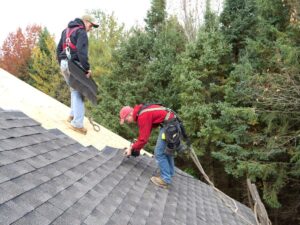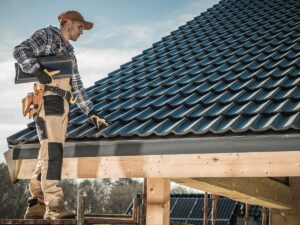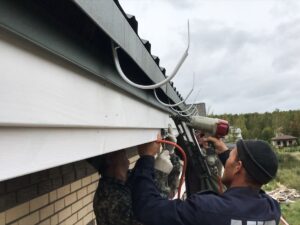The lifespan of a roof varies significantly based on material and environmental factors, generally ranging from 15 to over 100 years. Asphalt shingles last 15-30 years, while metal and clay tiles can endure 40-100 years. Homeowners should pay attention to signs such as leaks, visible damage, or granule loss, which indicate the need for replacement. Regular inspections and maintenance can also impact longevity. Discovering more about the nuances of roofing can help ensure optimal choices are made.
Key Takeaways
- Roofing materials have varying lifespans: asphalt shingles (15-30 years), metal (40-70 years), clay tiles (50-100 years), and slate (over 100 years).
- Regular maintenance and inspections can extend roof life by identifying issues like leaks or granule loss early on.
- Visible signs such as missing shingles, dark streaks, or mold growth indicate the need for roof replacement or repair.
- The climate significantly affects roof longevity, with extreme temperatures and moisture increasing wear and damage risks.
- Most roofs require replacement when they approach their material’s lifespan or show extensive visible damage.
Understanding How Long Does a Roof Last

How long can a homeowner expect their roof to last? The lifespan of a roof can vary significantly depending on the materials used. For instance, asphalt shingles typically last 15 to 30 years, while metal roofs can endure up to 50 years or more. Tile and slate roofs are known for their durability, often lasting over 100 years.
Understanding how long does a roof last is essential for homeowners to anticipate maintenance needs and replacement timelines.
Being aware of the signs you need a new roof is equally important. Common indicators include curling or missing shingles, water stains on ceilings, and excessive granule loss in gutters.
Homeowners should conduct regular inspections to identify these signs early. By knowing the expected lifespan and recognizing warning signs, homeowners can make informed decisions about roof care and replacement, ultimately protecting their investment.
Key Factors That Influence How Long a Roof Lasts

Several factors significantly influence the longevity of a roof beyond just the materials used. Climate plays a crucial role; roofs in areas with extreme temperatures or frequent severe weather may experience reduced roof lifetime.
Additionally, proper installation is essential; a poorly installed roof may deteriorate faster, prompting homeowners to ask, “how often should I replace my roof?” Regular maintenance, such as cleaning gutters and inspecting for damage, can also extend a roof’s life.
Furthermore, the angle and ventilation of the roof affect its durability; roofs that are poorly ventilated can suffer from moisture buildup, leading to premature wear.
Lastly, the surrounding environment, including nearby trees or buildings, could impact a roof’s lifespan by increasing the risk of damage from falling debris or lack of sunlight.
Understanding these factors can help homeowners make informed decisions regarding roof maintenance and replacement.
Signs You Need a New Roof

When considering whether a roof needs replacement, homeowners should be vigilant for several key indicators. One major sign is the age of the roof; most materials have a lifespan ranging from 15 to 50 years, depending on the type. Homeowners should also look for visible signs of damage, such as missing or curled shingles, leaks, or excessive granule loss in gutters.
Additionally, if there are dark streaks or mold growth, this could indicate underlying issues. Homeowners might wonder how long is a roof good for, and understanding these signs can help them make informed decisions.
To avoid premature replacement, many ask, how can I extend the life of my roof? Regular maintenance, including inspections and timely repairs, can significantly prolong its durability.
Common Roofing Problems That Shorten Roof Lifespan

Ignoring the signs of roof damage can lead to more severe problems that ultimately shorten a roof’s lifespan. Common issues include leaks, which can cause water damage to the underlying structure and promote mold growth.
Missing or damaged shingles are another frequent problem; they expose the roof to the elements and may lead to further deterioration. Clogged gutters can trap water, increasing the risk of rot and ice dams during colder months.
Additionally, improper installation or poor-quality materials can significantly reduce longevity and lead to costly repairs. Regular inspections can identify these problems early, allowing homeowners to take action before they escalate.
Roof Lifetime Expectations for Each Type of Roofing Materials
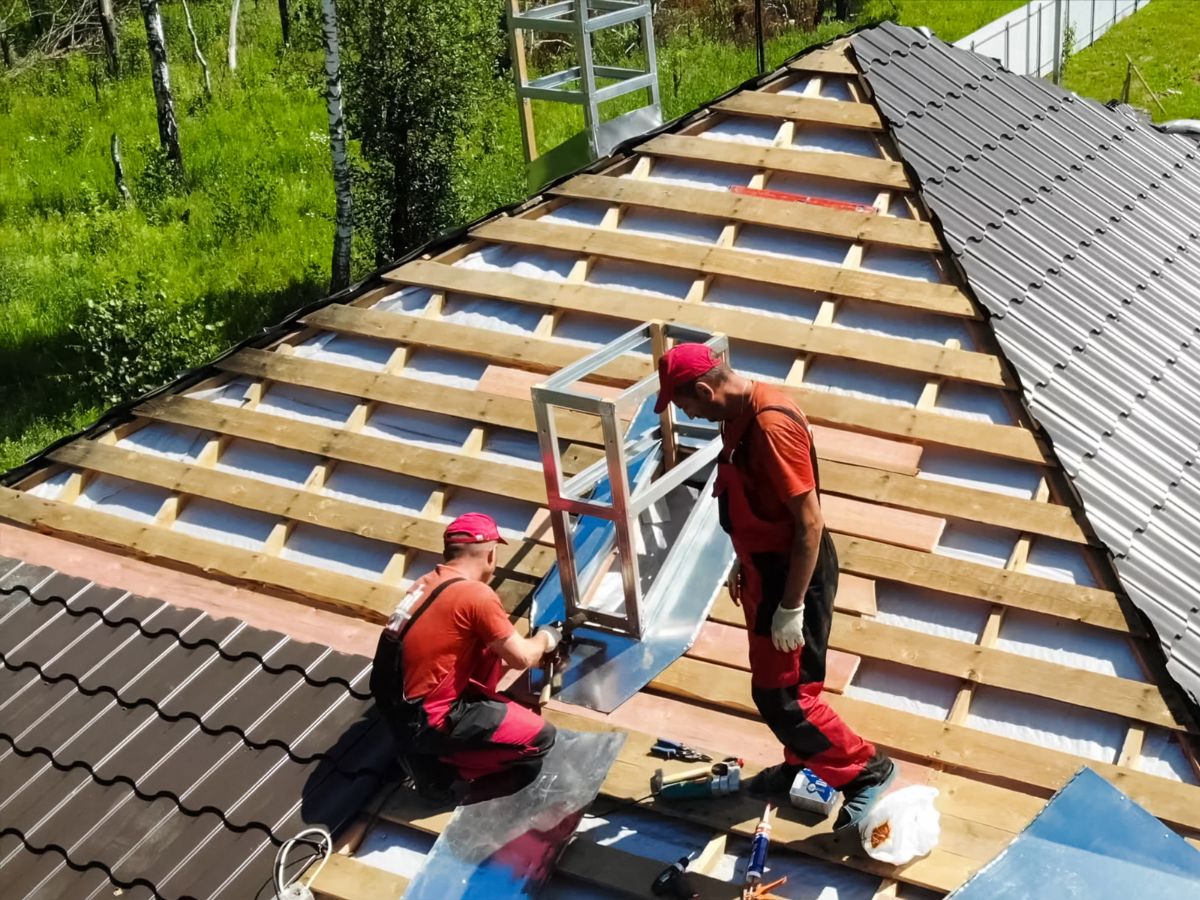
Understanding the expected lifespan of different roofing materials is crucial for homeowners planning for future maintenance and replacement. Each type of roofing material offers distinct durability, influencing the long-term investment decisions homeowners must make.
Here are the average lifetimes for common roofing materials:
- Asphalt Shingles: 15-30 years, prone to weathering.
- Metal Roofing: 40-70 years, highly resistant, but can be costly.
- Clay Tiles: 50-100 years, durable and aesthetically pleasing, but heavy and expensive.
- Wood Shingles: 20-40 years, appealing but susceptible to rot and pests.
The Impact of Climate on Roof Longevity
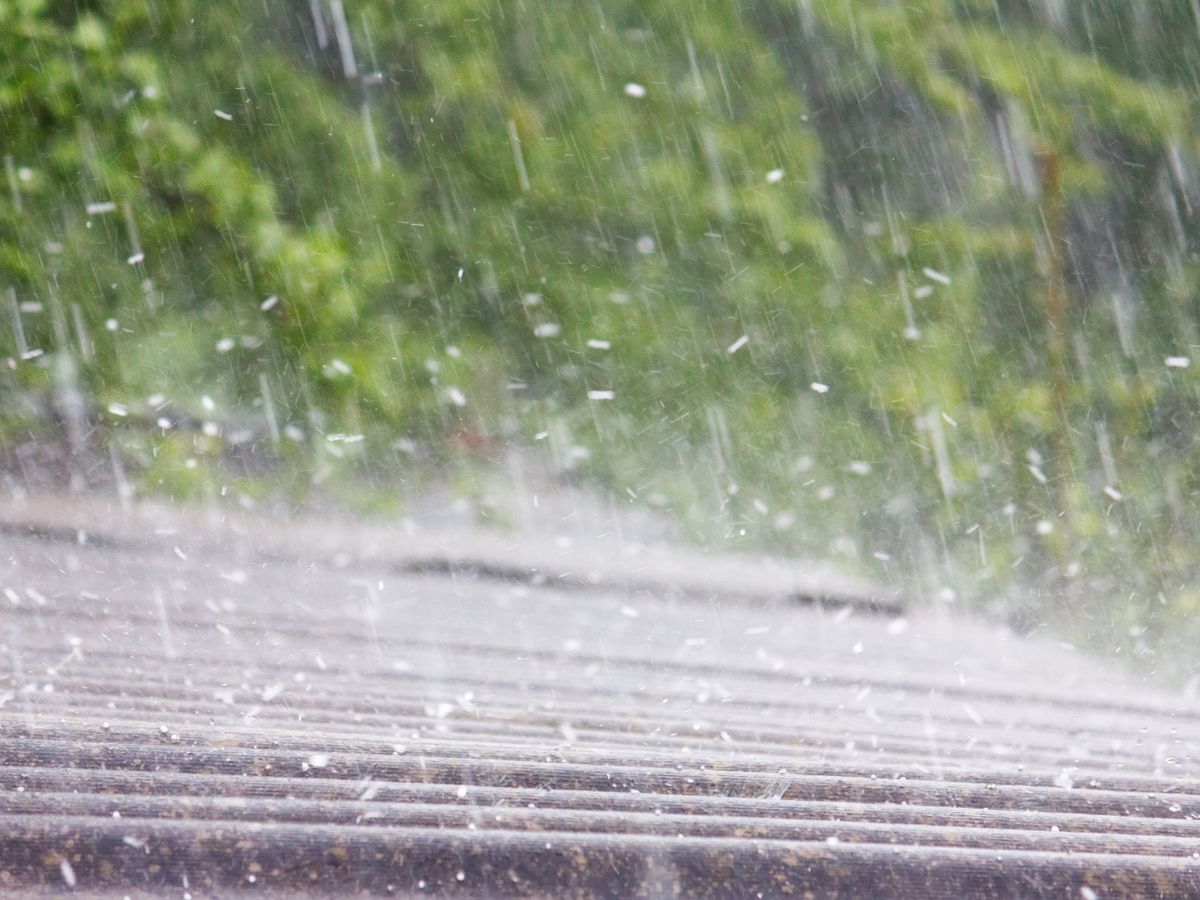
How does climate influence the lifespan of a roof? Climate plays a crucial role in determining how long a roof can last. Factors such as temperature fluctuations, humidity, and precipitation can significantly affect roofing materials. For instance, extreme heat can cause shingles to crack, while heavy snow can lead to structural stress. Understanding these impacts helps homeowners prepare for maintenance and replacement.
| Climate Type | Impact on Roof Longevity |
| Hot and Dry | Increased risk of cracking shingles |
| Humid and Wet | Higher chance of mold and rot |
| Cold and Snowy | Potential for ice damming issues |
Choosing the Right Roofing Material for Longevity
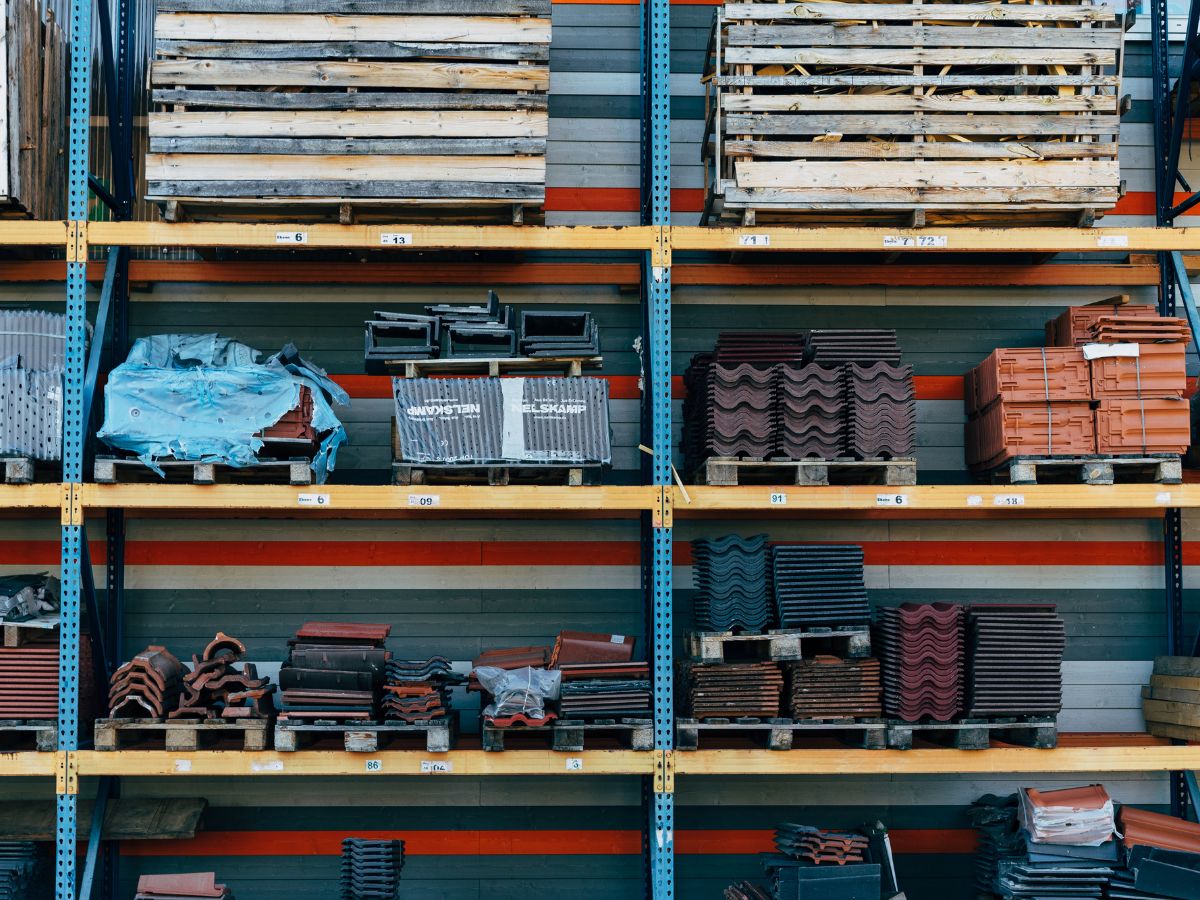
When selecting a roofing material, homeowners must consider longevity as a key factor, since the right choice can significantly impact the lifespan and performance of their roof.
Various materials offer different durability levels, and understanding these options is crucial for making an informed decision.
Here are four popular roofing materials known for their longevity:
- Metal Roofing: Lasts 40-70 years, resistant to extreme weather.
- Slate Roofing: Can endure over 100 years, providing a classic aesthetic.
- Clay Tiles: Typically lasts 50-100 years, ideal for hot climates.
- Asphalt Shingles: Generally lasts 20-30 years, economical and widely available.
Selecting the right material not only enhances structural integrity but also minimizes the need for frequent replacements, ultimately providing peace of mind and financial savings for homeowners.
Investing in quality roofing materials is an essential step toward a long-lasting roof.
Frequently Asked Questions (FAQ)
How long is a roof good for?
The lifespan of a roof largely depends on the material used and environmental conditions. Asphalt shingles generally last 15–30 years, metal roofing can last 40–70 years, and clay or slate tiles may last 50–100+ years. Proper installation, ventilation, and regular maintenance also influence how long your roof remains effective.
How often should I replace my roof?
You should consider replacing your roof when it reaches the end of its expected lifespan or shows signs of serious wear, such as leaks, missing shingles, or visible sagging. Most homeowners replace asphalt roofs every 20–25 years, while metal, tile, or slate roofs may not need replacement for several decades.
How can I extend the life of my roof?
To maximize your roof’s lifespan, schedule regular inspections, clean gutters to prevent water buildup, promptly repair damaged shingles, and ensure proper attic ventilation. Proactive maintenance helps identify problems early and prevents minor issues from becoming major ones.
Should I hire a professional for roof inspections?
Yes. Hiring a licensed roofing professional ensures a thorough inspection that can detect hidden damage, moisture problems, and structural concerns. Experts can also recommend timely repairs that extend your roof’s lifespan and prevent costly future replacements.
Final Thoughts
Understanding how long a roof lasts and recognizing the signs of wear are essential for protecting your home and investment. Factors such as material type, climate, installation quality, and maintenance practices all influence a roof’s longevity. To stay ahead of potential issues, homeowners should schedule routine inspections and consider guidance from a trusted residential roofing contractor. Choosing durable, well-installed roofing systems tailored to your environment can reduce long-term expenses and ensure lasting protection. Ready to protect your home with expert service? Contact Kevin Phillips Roofing today for a free estimate and dependable solutions.

